Operation Tribute: neither forgotten nor dead
especiales

On December 7, 1989, 35 years ago, Operation Tribute, initiated the day before, culminated with the burial of the remains of the Cuban combatants who had fallen in internationalist missions in Africa, in the sacred soil where they were born and which awaited them with intense emotion.
During the previous day, the Cuban people had paid homage in a funeral chapel to the remains of the 2,085 heroes who were finally welcomed in the arms of their proud and moved homeland. Both in the cemeteries and in the wakes, the presence of relatives and compatriots had been massive in that Operation, which took place throughout the country.
"...From Angola we will take with us the intimate friendship that unites us to that heroic nation and the gratitude of its people and the mortal remains of our dear brothers fallen in the line of duty...", Army General Raul Castro Ruz, Minister of the FAR, had stated on December 12, 1976.
That truth was something that Commander in Chief Fidel Castro himself had also confirmed before the world. The word given by the leaders of the Revolution became since then a sacred commitment that could be fulfilled at the end of the war fought by Angola with the invaluable cooperation of Cuba, which made possible the proclamation of Angola as a free and sovereign nation in 1975 and much more.
After 13 years of material and human aid and active participation in combat scenarios, Angola defeated its internal and external enemies, supported by mercenaries and neocolonial powers. The imprint of the Caribbean island was at the same time supportive and unconditional in many other fields.
And with the 1988 Peace Agreements, the independence of southern Namibia and the dismantling of the opprobrious Apartheid regime in South Africa, thanks to Cuba's decisive contribution, the conditions were created for the return of Cuban troops to their land, together with the remains of their beloved compatriots killed in combat.
However, although the Island withdrew the troops that at the request of President Agostinho Neto cooperated with the just cause of independence of the Angolans, it did not abandon to their fate the brotherly people, who continued to need collaboration in areas such as the economy, education and public health, to name just a few fields.
Returning to Operation Tribute, it was a sacred duty and it was possible due to a hard and specialized work in which participated researchers from the Institute of Legal Medicine, in charge of the identification and preparation of the relics of the combatants in the Cemetery of the Cuban Military Mission in Angola.
Then they were transferred to the homeland in a mission conceived in detail that included the execution of 204 civilian tasks, among them the Pantheons of the Fallen in internationalist missions set up in each of the municipalities of the country.
It was not by chance that December 7 was chosen, the date of the death on the battlefields of Punta Brava of Lieutenant General Antonio Maceo and his aide Panchito Gomez Toro, during the heroic days of the 95 campaign.
The relics of the heroes were buried at the same time in the morning of that day in 1989, with all the deserved honors in the 169 municipalities.
Previously, they had been honored during the wake in the funeral chapel with the participation of family members, relatives and the massive attendance of the Cuban people, especially those affiliated to the CDR, FMC, student organizations and the Militias of Territorial Troops.
It is true that it was a hard and mournful hour that the population was transformed as so many other times in pride for their children, and in greater convictions and support for the noble cause they defend, aware that to be internationalist is to settle a debt with humanity.
The funeral processions also paid homage and burial to martyrs who offered their lives, for the same cause, in other territories such as Ethiopia and Nicaragua.
With regard to the fallen in the Angolan territories, during the entire campaign (1975-1991), 2,398 sons of this land perished in combat and live in the hearts of their families and the people.
Today, thousands of Cubans think that they would never have grown so much in the moral and revolutionary spirit of victory without that dedication and experience of courage, spirit of solidarity, and without devoting themselves in altruism and in the fight against the imperialist and invading forces, in Angola and other regions of the world.
A lesson to the world was also given when the African nation was able to continue on its way, self-confident and independent. It was as if the slave Carlota, whose name was taken as a symbol of the feats of the Cubans, gave a tremendous slap in the face to her enslavers, back in the distant Cuban 19th century when she was born and fought bravely.
Also, many good fellow Cubans have not been able to fail to appreciate the links between the National Day of Mourning, as Fidel pointed out, and the rescue of the remains of the Bronze Titan and Panchito Gomez Toro by a small troop of Havana mambises commanded by the colonel of the Liberator Army Juan Delgado.
The corpses of Maceo and Panchito had to be buried under a conspiracy of silence in the farm La Difficulty, property of Juan's family. The remains could not be exhumed to give them a dignified burial until 1899, after the end of the 95 War, with the ill-fated U.S. intervention.
On that occasion, the libertarian combatants and the Cuban people also paid tribute to the two heroes of the homeland. Glory to the Cubans who gave the best of themselves for a just cause.


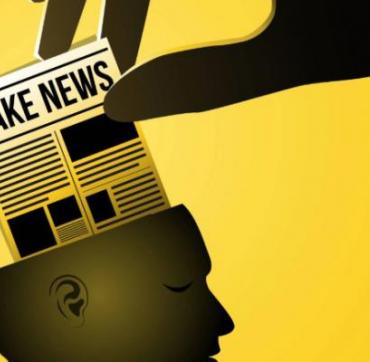
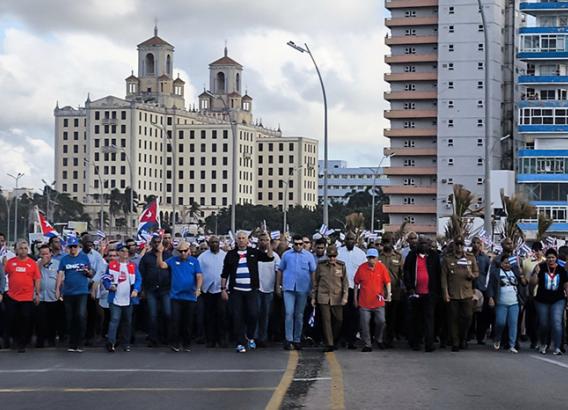
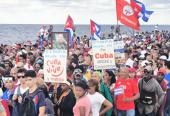

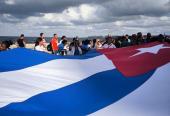
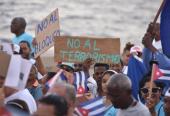
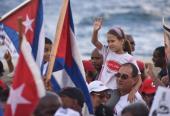


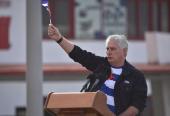
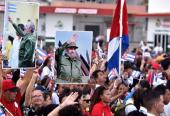

Add new comment